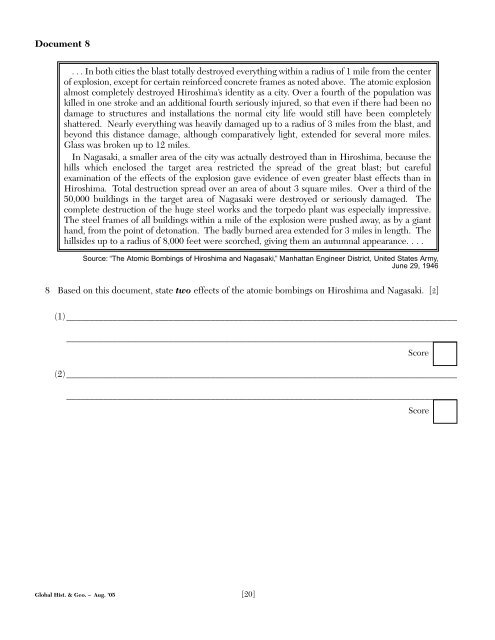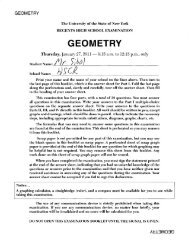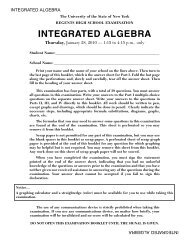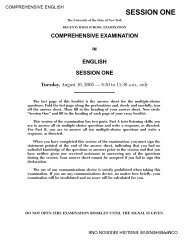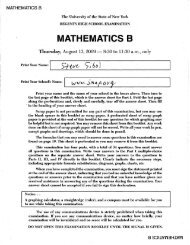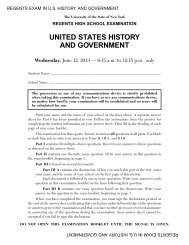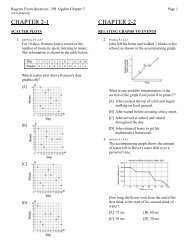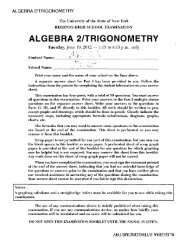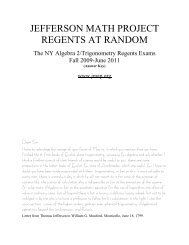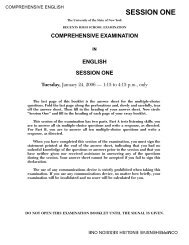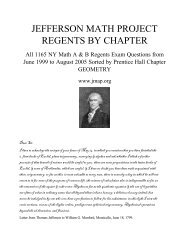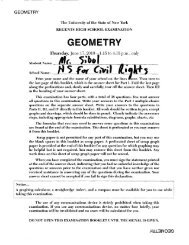global history and geography - JMap
global history and geography - JMap
global history and geography - JMap
Create successful ePaper yourself
Turn your PDF publications into a flip-book with our unique Google optimized e-Paper software.
Document 8<br />
. . . In both cities the blast totally destroyed everything within a radius of 1 mile from the center<br />
of explosion, except for certain reinforced concrete frames as noted above. The atomic explosion<br />
almost completely destroyed Hiroshima’s identity as a city. Over a fourth of the population was<br />
killed in one stroke <strong>and</strong> an additional fourth seriously injured, so that even if there had been no<br />
damage to structures <strong>and</strong> installations the normal city life would still have been completely<br />
shattered. Nearly everything was heavily damaged up to a radius of 3 miles from the blast, <strong>and</strong><br />
beyond this distance damage, although comparatively light, extended for several more miles.<br />
Glass was broken up to 12 miles.<br />
In Nagasaki, a smaller area of the city was actually destroyed than in Hiroshima, because the<br />
hills which enclosed the target area restricted the spread of the great blast; but careful<br />
examination of the effects of the explosion gave evidence of even greater blast effects than in<br />
Hiroshima. Total destruction spread over an area of about 3 square miles. Over a third of the<br />
50,000 buildings in the target area of Nagasaki were destroyed or seriously damaged. The<br />
complete destruction of the huge steel works <strong>and</strong> the torpedo plant was especially impressive.<br />
The steel frames of all buildings within a mile of the explosion were pushed away, as by a giant<br />
h<strong>and</strong>, from the point of detonation. The badly burned area extended for 3 miles in length. The<br />
hillsides up to a radius of 8,000 feet were scorched, giving them an autumnal appearance. . . .<br />
Source: “The Atomic Bombings of Hiroshima <strong>and</strong> Nagasaki,” Manhattan Engineer District, United States Army,<br />
June 29, 1946<br />
8 Based on this document, state two effects of the atomic bombings on Hiroshima <strong>and</strong> Nagasaki. [2]<br />
(1)____________________________________________________________________________________<br />
____________________________________________________________________________________<br />
Score<br />
(2)____________________________________________________________________________________<br />
____________________________________________________________________________________<br />
Score<br />
Global Hist. & Geo. – Aug. ’05 [20]


